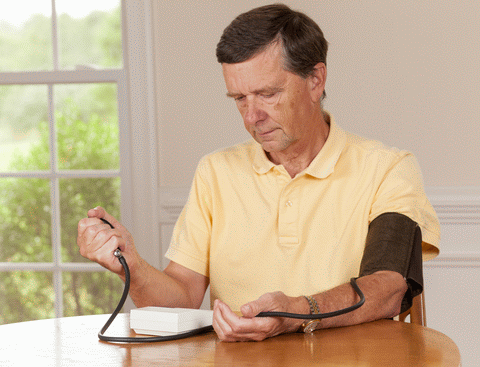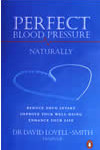One of the greatest benefits of monitoring your blood pressure yourself is that you will have a much better understanding of your condition

If you have been diagnosed with high blood pressure, known medically as hypertension, your health professional may recommend that you use a home monitor to check your blood pressure between visits.
By taking your blood pressure regularly, you can easily tell if your medications are working. You might be inspired to exercise more if you can see the concrete effect it has on lowering your blood pressure.
People who check their own blood pressure tend to be more conscious of the importance of taking their medication on a regular basis and they tend to be the sort of people who notice the foods or behaviors that raise their blood pressure and adjust their lifestyle to avoid them.
Tips on Selecting the Right Blood Pressure Monitor
We recommend the self-inflating cuff. For one, pumping it up may be difficult for people with arthritis. And pumping is a muscular activity, so it can actually affect your blood pressure reading.
One of the most important things to consider when buying a device is to make sure that the cuff fits your arm. If it’s too small or too big, you won’t get correct readings. As a rule of thumb, make sure that the cuff fits easily around your arm with fabric to spare. If the cuff that comes with your monitor doesn’t fit, ask the retailer if you can get a larger one from the manufacturer.
And don’t forget to shop around. The price for the same device may vary considerably depending on whether you are buying from a chain store or pharmacy.
Benefits of Taking Your Own Blood Pressure at Home
One of the benefits to self-monitoring is that it allows you to see if your high blood pressure is really just “white-coat hypertension.” For many people, just the sight of a stethoscope or the smell of a medical centre can send the blood pressure skyrocketing, even if it’s normal most of the time. Unless you take readings outside of a medical setting, there’s no way to tell if you really do have high blood pressure or not.
Self-monitoring can also help with the reverse: People who have normal blood pressure in a medical setting but high blood pressure elsewhere, such as on the job.
How To Take Your Blood Pressure At Home
Blood pressure is the force of the blood as it moves through your arteries. It is usually shown as two numbers, such as 120/80 mmHg. The top number is the systolic pressure, which is the pressure recorded when blood is being forced through the arteries by the heart. The bottom number is the diastolic pressure, which is the reading taken between heartbeats.
For a diagnosis of hypertension, your blood pressure would probably be 140/90 mmHg or higher. People with, isolated systolic hypertension which is more common in the elderly, have a normal bottom number but a top number of at least 160.
Taking your blood pressure with an automated monitor is easy, but getting an accurate reading does have a few requirements.
- Avoid tobacco, caffeine, and food for about 30 to 60 minutes before taking a reading
- Sit quietly for at least five minutes before taking a reading. If you are excited, angry, or upset, your reading may not be typical
- Sit in a chair with your back supported and your feet flat on the floor
- Place your arm on a table so that it is level with your heart
- During the reading, sit still
- Turn of the Television and / or Radio off, and avoid conversation whilst taking the reading
- Once the reading is finished, wait a few minutes and take it again. Then average the two readings
Keep a log of your blood pressure, also noting the time of day and any other factors that might have influenced the reading. If your monitor automatically keeps a record, you can rely on that, but remember that it won’t be much good if more than one person in your house is using the same device.
Check with your health professional about how often you should take your blood pressure. If your blood pressure is under control, then usually one or two times a month may be fine. If you’re trying new medications, your blood pressure is unusually high, or you have other illnesses like diabetes, your health professional may ask that you take it more often.
Most people’s readings are lower at home than at the office. Because of this, the target range should be a little lower. For example, if you have decided with your health professional that your blood pressure should be less than 140/90 mmHg in the office, then it should not be higher than 135/85 mmHg at home.
Take care of your monitor. If your drop or damage it, make sure to have it tested again.
You can not rely on those freestanding blood pressure machines at your local supermarkets or pharmacies. With the amount of abuse that they are likely to receive, it’s hard to tell if they’re being maintained and calibrated, so you can’t rely on them.
Older people and those with arthritis may have difficulty getting their arm into the machine. If you are uncomfortable, the reading may not be accurate. You also need to take into account ‘Where you are’ – the supermarket or shopping mall may not be the most relaxed place to be taking your blood pressure.
 Then you need to read this book, by New Zealand author, Dr. David Lovell-Smith.
Then you need to read this book, by New Zealand author, Dr. David Lovell-Smith.
In this book Dr. David Lovell-Smith describes how his patients successfully used diet, lifestyle changes and Transcendental Meditation to bring their blood pressure down.
This book offers new hope and insight for those with high blood pressure but it is not for hypertensives alone. The knowledge which Dr Lovell-Smith presents in his book is timely and relevant, and its exposition is long overdue.
Shop price is $34.95 Our price is $25.00 (including postage – NZ only)
